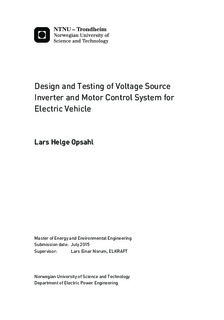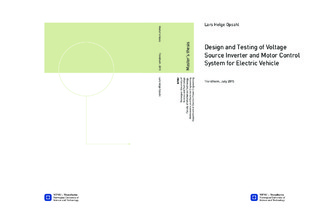| dc.description.abstract | With fast rotating permanent-magnet motors and compact battery storage units, the high performance motorsport community has, in recent years, started to utilize the quick response and high torque of electrical drivetrain solutions. By recovering energy, braking into a corner, for then to utilize the same energy, boosting out again, the electrical machine gives increased performance even for the fastest racing cars. The purpose of the work presented in this Master s thesis is to develop and produce the power electronics and motor control system needed to control such an electric machine, where the final product is used to drive a fully electric prototype racing car.
The thesis presents the conceptual work, design choices, prototyping, testing and development of a 2-level voltage source inverter and motor control system. The voltage source is a battery accumulator energy storage unit, while the machine is a three-phase permanent-magnet motor. The voltage source inverter is based on insulated-gate bipolar transistors (IGBTs), controlled by a motor control system called field oriented control. On command from the driver s throttle, the motor control system generates the required stator currents, giving the wanted output torque, supplied from the voltage source of the battery accumulator.
The inverter is the connecting interface between the power source, and the rotating machinery. With the amount of energy and power needed to drive a racing car, safe and reliable operation is important. To ensure the safety of the driver and operating personnel, the system and its safety features have been through extensive testing in a laboratory setup and on the race tracks.
In the system development process, simulation and modelling tools have been applied to investigate different solutions and technologies. These tools have also been used to design the electric circuits, program code and mechanical design needed for the system. The final product is installed in a racing car and shows great performance. | |

